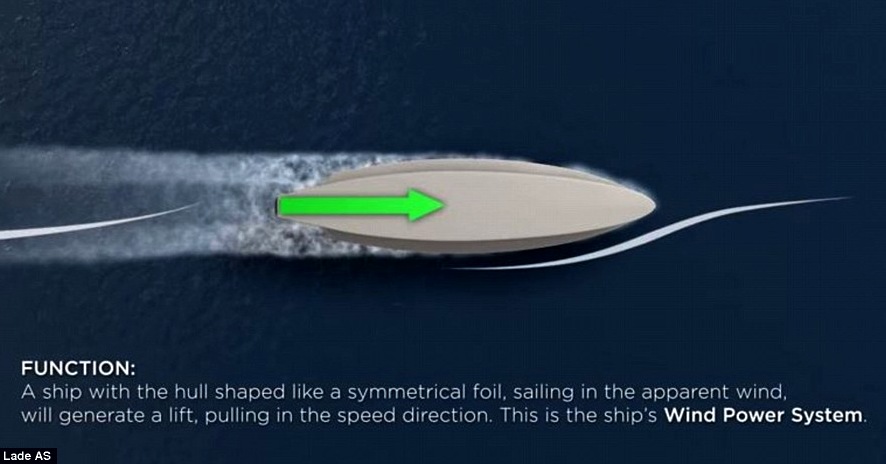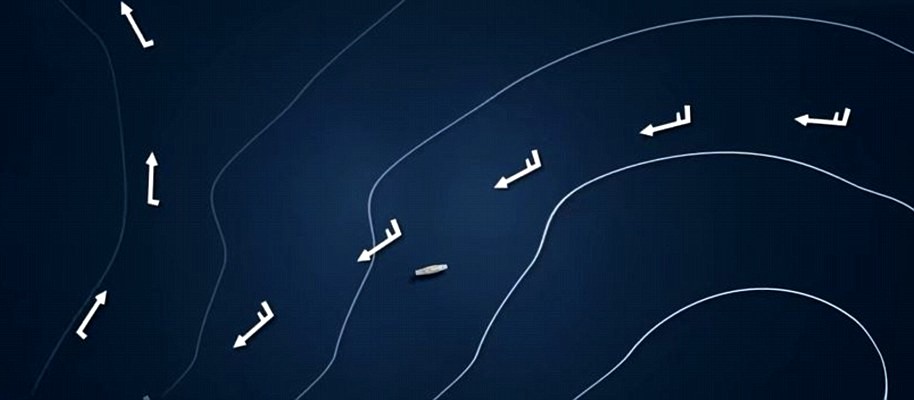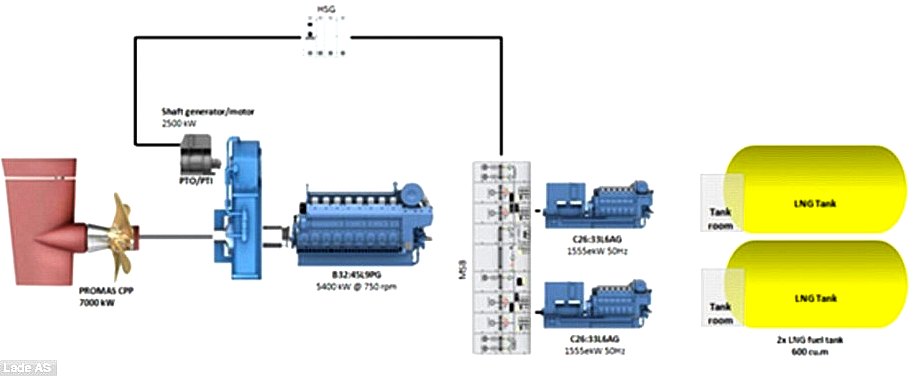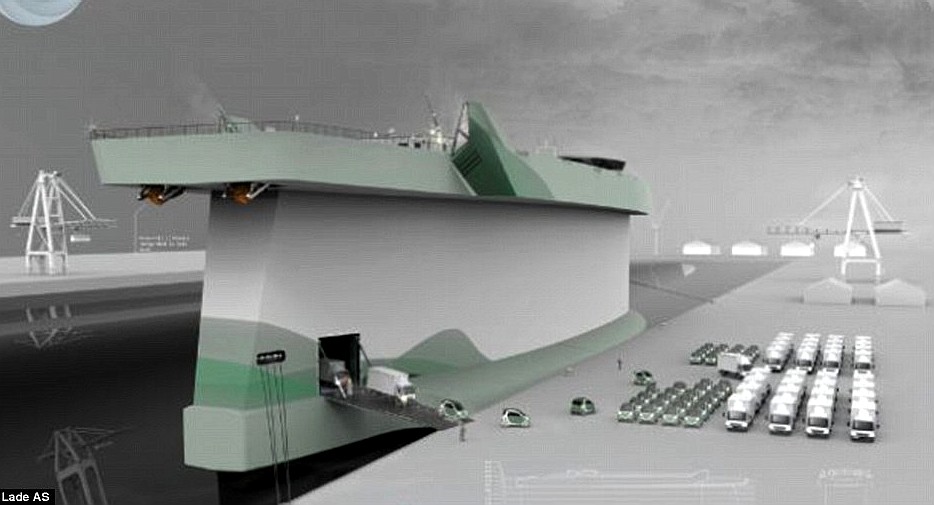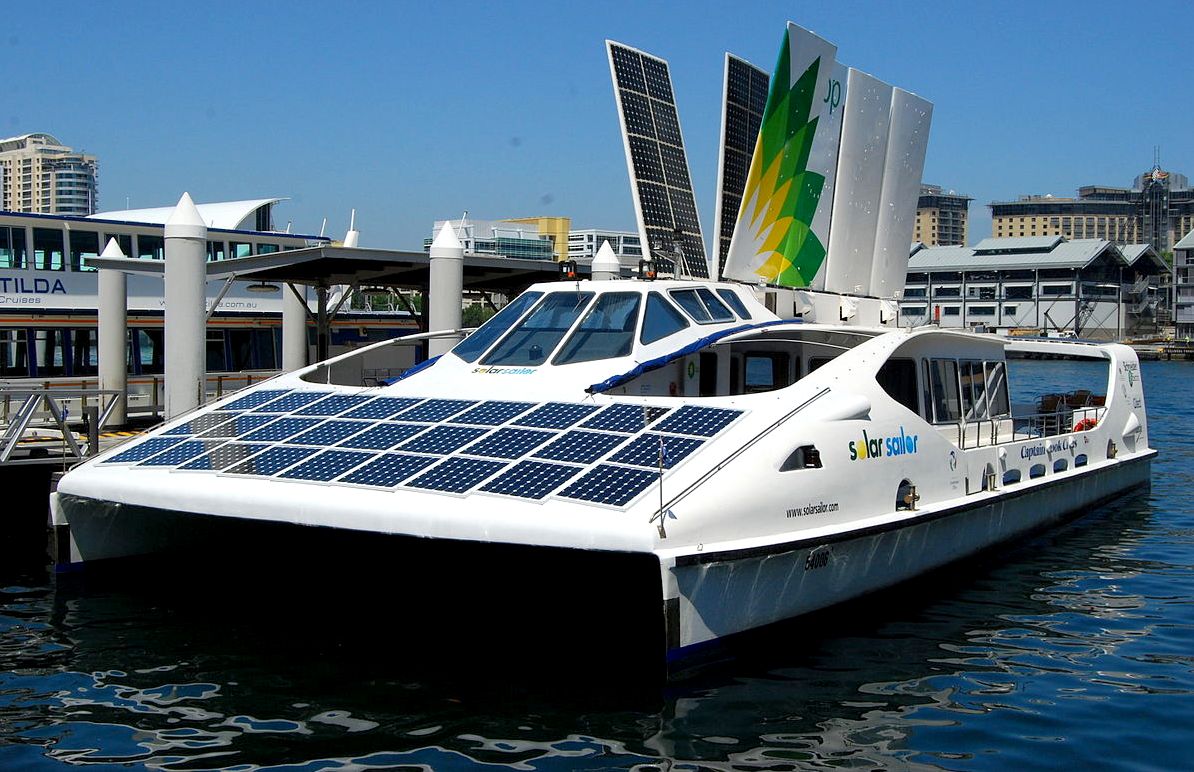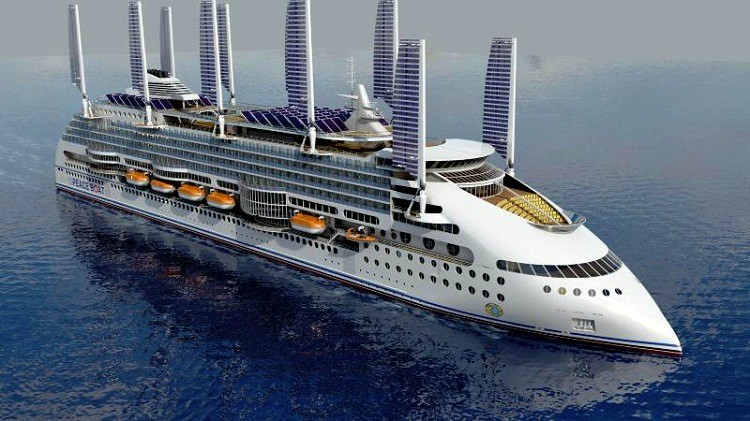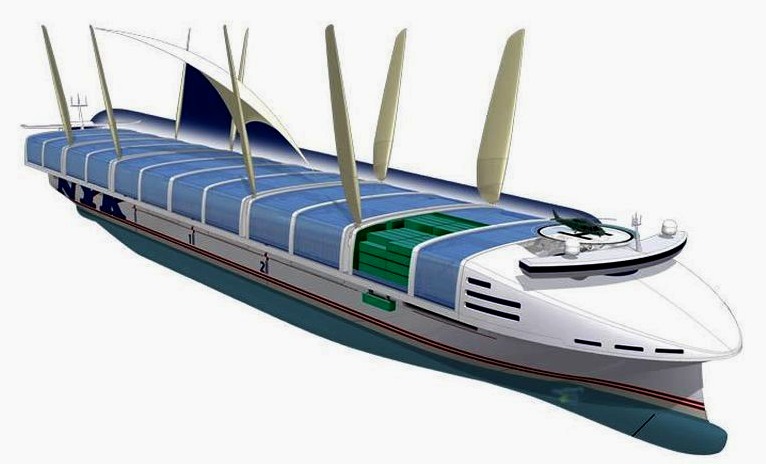|
VINDSKIP by LADE AS
Please use our A-Z INDEX to navigate this site where page links may lead to other sites
|
|||||||||||||||||||||||||||||||||||||||||||||||||||||||||||||||||||||||||||||||||||||
|
2015
NORWAY
WING HULL - The relative, or apparent, wind is given by the ships course and speed, and the direction and strength of the true wind. True wind is the wind measured on board a stationary ship. When the ship starts moving, the apparent wind is generated. The Wind Power System of Vindskip uses this apparent wind to generate a 'positive force in the longitudinal direction of the ship', described as 'the angle of attack'.
The Wind Power System of Vindskip uses this apparent wind to generate a 'positive force in the longitudinal direction of the ship', described as 'the angle of attack'.
COMPUTER COURSE ROUTING - Special software will monitor wind conditions and calculate the best route for the ship, by comparing real-time meteorological information to calculate wind energy. The captain would input when they want to arrive, and the weather forecast would be loaded to calculate the best route.
The firm has begun offering the design and technology to consultancies, ship owners and ship yards for licensing, but it is not known when a fully-functioning Vindskip will be made.
LNG POWERTRAIN - Over time, the contribution of the Wind Power System to the actual propulsion of the ship will vary, continued the firm. At this point, a Cruise Control will balance a liquefied natural gas-powered (LNG) propulsion system that works with the Wind Power System to keep a constant speed of the ship. This control will adjust the pitch on the propeller, as well the rotations per minute, so it uses fuel more efficiently.
SAIL SHAPED CARGO SHIP - The Vindskip (pictured), designed by Lade AS, uses a hull designed to act as a so-called airfoil, or giant sail. The makers of the wind-powered hybrid merchant ship said that while engines are still needed, their design could achieve fuel savings of 60% while reducing emissions by 80%.
SUSTAINABLE CONTAINER SHIPS - This 50m concept vessel may be doubled and quadrupled without too much trouble. You'd need to up-scale by a factor of 8 to match the 400 meter ships that operate today to carry 960 standard containers. See our top ten list below. That is nowhere near the capacity of a heavy bunker fueled giant, but it is a formula for eventual 100% zero carbon transportation that is theoretically workable. We believe that such a system could eventually replace bunker fuels and eliminate the need for liquid fuels that may be potentially dangerous.
CARGO CONTENDERS A list of the top ten fossil fueled leaders that could benefit from solar and wind assistance. You may notice from the specification of these vessels that we are in the right ballpark for power to cargo ratio when comparing DWT to installed engine power:
The concept of using wind and solar power together on ships is no longer science fiction, nor is it decades away. There are a number of interesting concepts under development. In our view the first practical application of combined wind and solar power was with Solar Sailor, where sails were also solar panels that could be aimed.
A - Z SAIL AND SOLAR ASSISTED BOATS & SHIPS
LINKS & REFERENCES
http://www.sautercarbonoffsetdesign.com/black-magic3.html https://seaportgame.fandom.com/wiki/Save_the_oceans_-_Ships https://www.seatrade-maritime.com/news/americas/new-coalition-to-push-for-zero-carbon-emission-shipping-by-2030/ https://www.mol.co.jp/en/pr/2019/19065.html https://www.j-l-a.com/press_releases/classnk-grants-aip-related-to-wind-challenger-project/ https://shipandbunker.com/news/world/148606-solar-and-wind-powered-cruise-ship-to-sail-in-2020
TRANSFERABLE TECHNOLOGY - The design of the Climate Change Challenger might be adapted to Cargo, Container, Cruise and Ferry designs, without needing to radically alter port facilities. The designs above are not representative of adaptations of the concept, but serve to illustrate the thinking of other design houses.
Please use our A-Z INDEX to navigate this site
AEGEAN - ADRIATIC SEA - ARCTIC OCEAN - ATLANTIC OCEAN - BALTIC SEA - BAY OF BENGAL - BERING SEA - CARIBBEAN SEA - CORAL SEA EAST CHINA SEA - ENGLISH CHANNEL - GULF OF GUINEA - GULF OF MEXICO - INDIAN OCEAN - IONIAN - IRISH SEA - MEDITERRANEAN SEA NORTH SEA - PACIFIC OCEAN - PERSIAN GULF - SEA OF JAPAN - SOUTH CHINA SEA - SOUTHERN OCEAN - TYRRHENIAN
|
|||||||||||||||||||||||||||||||||||||||||||||||||||||||||||||||||||||||||||||||||||||
|
This website is provided on a free basis as a public information service. copyright © Climate Change Trust 2019. Solar Studios, BN271RF, United Kingdom.
|

